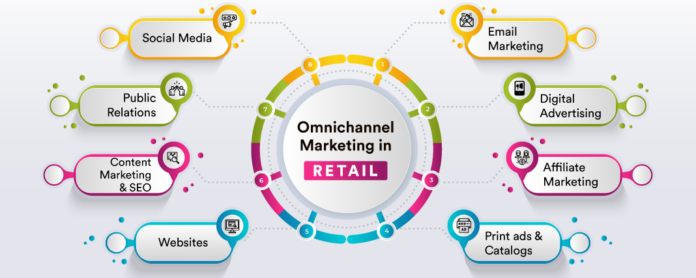The barriers between virtual and actual lives have blurred as technology advances. Marketers, salesmen, and customer service personnel will need to adjust their strategies as people’s habits change. Marketers are increasingly embracing a comprehensive omnichannel experience that customers can access at any time.
A 14-month research was done by Harvard Business Review and a major US retail corporation to better understand customer shopping habits. They polled 46,000 customers and discovered that 73% of them used several channels. It’s discovered that these clients were more valuable to the merchants. According to the study, customers who utilised more than four channels spent 9% more time in the store than those who only used one.
Customer experience across all channels is clearly no longer an option; it’s a need. Through great experiences across many touchpoints, merchants are discovering new methods to acquire, engage, and keep customers. Their focus has evolved away from traditional marketing and toward highly targeted data-driven omnichannel marketing tactics, which provide a higher return on investment than traditional marketing.
What is the impact of change on technology brands?
“The majority of marketers want to give a highly tailored experience to today’s consumers as a part of their marketing strategy,” stated Ingram Micro India Marketing Head, Naved Chaudhary. “A well-executed and targeted campaign can boost ROI, revenue, customer acquisition, and brand recognition dramatically.”
He says “At Ingram Micro, we’re always on the lookout for new ways to improve personalisation.” Depending on the media vehicle used and the product for which we develop a marketing strategy, the ROI can be high. “We can’t expect a high degree of ROI in high involvement areas,” says the researcher.
To stay relevant in today’s competitive business environment, you must develop a strong Omnichannel Marketing plan. “Whether accessed digitally, in person, or both, businesses must build a consistent and unified brand experience across all sales and marketing channels.” It’s all about integrating your digital and physical selves. “A well-thought-out omnichannel approach comes in handy here,” Chaudhary explains.
He proposed three responses to the increasing digital marketing and data privacy restrictions:
1) Be honest in your communication,
2) Use a macro-targeting plan to reach out to customers – This allows you to reach out to a huge number of customers without knowing their personal information, and
3) Use social media to communicate with customers.
When asked how marketing is dealing with digital transformation, he responded, “A digital-first approach aids us in the transformation in a variety of ways, leading us into the all-digital future that is plainly on the economic horizon.”
“A digital transformation plan must incorporate technology into every area of the company’s model, including what it produces, how it communicates with clients, and how it works across India via regional campaign adaption,” says the author.”A digital-first strategy helps us achieve our objectives since different media vehicles react differently,” he stated.
Follow and connect with us on Facebook, LinkedIn & Twitter.

